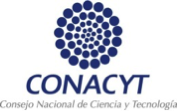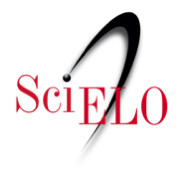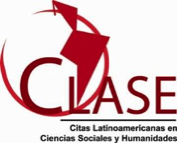The Museum and its Relationship with the Community. New Museological Paths: Examples and Reference Points.
DOI:
https://doi.org/10.30763/Intervencion.2010.2.18Keywords:
interpretation, museum, discourses, visitors, critical routes, historyAbstract
The following essay is an initial approach to the present dilemma that many anthropologically themed museums facing: new and different needs from publics, and the evolution of the very notion of the true mission of a museum. Based upon several authors, both classical and contemporary, a general map has been drawn, pointing out the many available options for the current institutions that have also been identified as working within the limits of the interpretative paradigm. Although several museums still have strong reminiscences of the older educational paradigm, they all share the continuous effort towards a better communication with their publics, be it by means of hybridation, integration within larger museological complexes, emotion-triggering stagings, identity reaffirmation or the inclusion of alternative stories, told by the many voices that conform today's societies.
Downloads
References
Cameron, Duncan 2004 “The Museum, a Temple or the Forum”, en Anderson, G. (ed.), Reinventing the Museum. Historical and Contemporary Perspectives on the Paradigm Shift, Lanham, Altamira Press, 61-73.
Genoways, Hugh H. y M. A. Andrei (eds.) 2008 Museum Origins. Readings in early museum History and Philosophy, Walnut Creek, California, Left Coast Press, 23-28, 99-110, 137-142 y 187-190.
Gob, A. y N. Drouguet 2004 “Définition et diversité des musées”, en La Muséologie. Histoire, Développments, enjeux actuels, París, Armand Colin, 29-48. Hooper-Greenhill, Eilean
“Education, postmodernity and the museum”, en Knell S.J. et al., Museum Revolutions. How museums change and are changed, Londres, Routledge, 367-377.
Maceira, Luz 2009 “Dimensiones simbólico-rituales de los museos-lugares de la memoria”, en Alteridades, México, UAM, año 19, núm. 37: 69-85.
Morales, Luis Gerardo 1999 “Museo y Grafía: observación y lectura de los objetos”, en Historia y Grafía, México, UIA, núm. 13: 225-256.
“Los límites narrativos de los museos de historia”, en Alteridades, México, UAM, año 19, núm. 37: 43-56.
Ross, Max 2004 “Interpreting the new museology”, en Revista Museum and Society, documento electrónico, Julio 2004, University of Leicester, 84-103, disponible en: http://www.le.ac.uk/ms/m&s/Issue%205/ross.pdf, consultado en julio 2004.
Simpson, Moira 2001 “The ‘new' museum paradigm”, en Making representations. Museums in the post-colonial era, Londres y Nueva York, Routledge, 71-170.
Vázquez Olvera, Carlos 1994 “La concepción del Museo Nacional de Historia y el Patrimonio Cultural Mexicano. Proyectos culturales de sus ex-directores (1946-1992)”, tesis de maestría en Antropología Social, México, ENAH.
Watson, Sheila 2007 “History museums, community identities and a sense of place: rewriting histories”, en Knell, S.J. et al., Museum Revolutions. How museums change and are changed. Londres, Routledge, 160-172.
Zunzunegui, Santos 2003 Metamorfosis de la Mirada. Museo y Semiótica, Madrid, Cátedra-Universitat de València.
Referencias en Internet
Museu d'Història de Catalunya:http://www.es.mhcat.net/
Royal BC Museum: http://www.royalbcmuseum.bc.ca/zoning/Default.aspx
Complexe muséal du musée de la Civilisation, Québec: http://www.mcq.org/fr/complexe/index.html
Museu Maritím de Barcelona: http://www.mmb.cat/visita.phpidm=2&pagina=3&codi_subseccio=44&estic=1
MuseumsQuartier, Wien (explicación básica en español): http://www.mqw.at/downloads/basisfolder2008/basisfolder_spanisch.pdf
Additional Files
Published
How to Cite
Issue
Section
License
Copyright (c) 2014 Intervención, Revista Internacional de Conservación, Restauración y Museología

This work is licensed under a Creative Commons Attribution-NonCommercial 4.0 International License.

Atribución-NoComercial 4.0 Internacional
https://creativecommons.org/licenses/by-nc/4.0/deed.es
Usted es libre de:
- Compartir — copiar y redistribuir el material en cualquier medio o formato
- Adaptar — remezclar, transformar y construir a partir del material
Bajo los siguientes términos:
-
Atribución — Usted debe dar crédito de manera adecuada, brindar un enlace a la licencia, e indicar si se han realizado cambios. Puede hacerlo en cualquier forma razonable, pero no de forma tal que sugiera que usted o su uso tienen el apoyo de la licenciante.
-
No Comercial — Usted no puede hacer uso del material con propósitos comerciales.




















